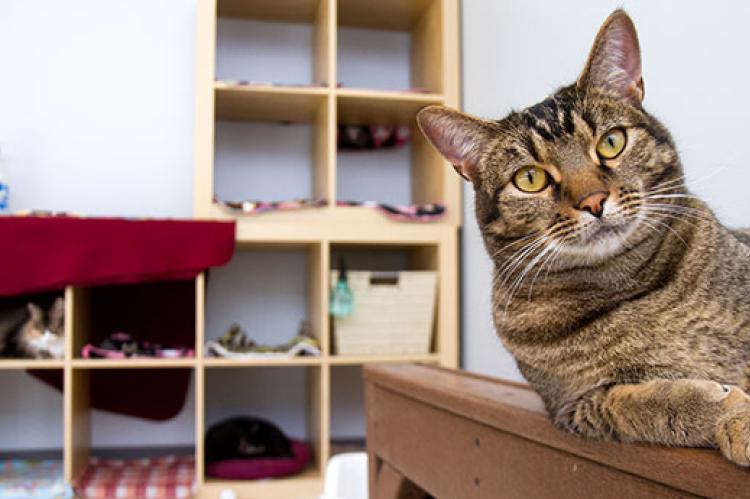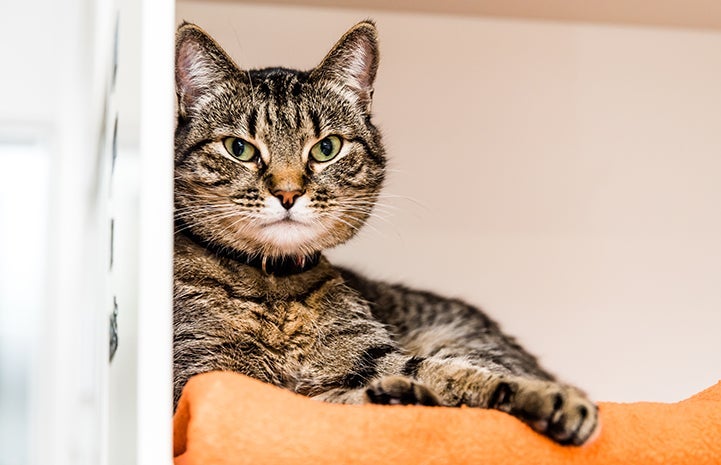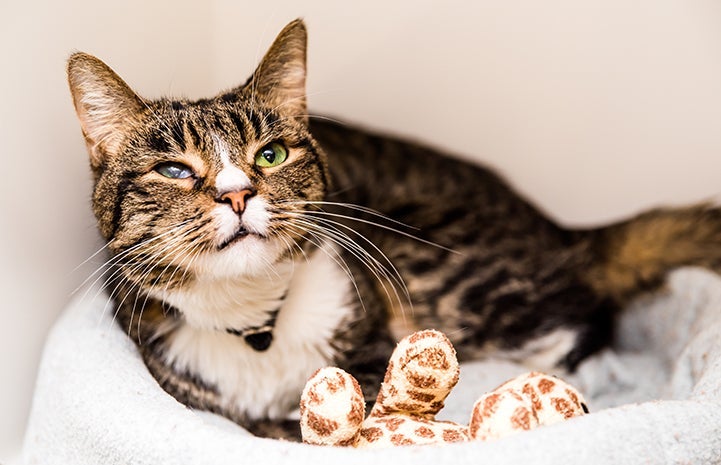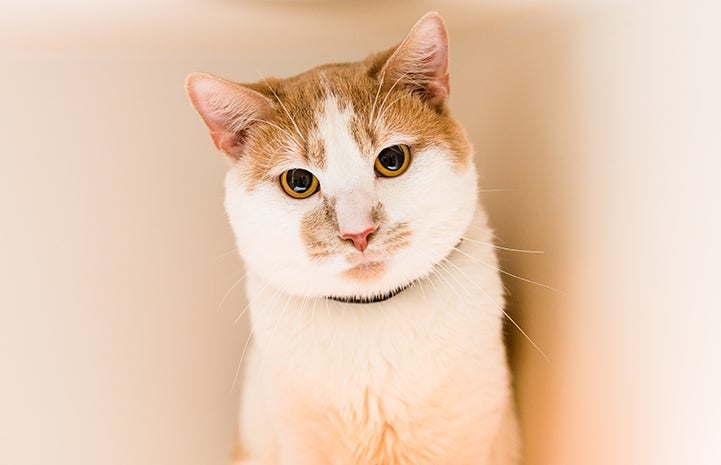Cat Aggression Toward People: Causes and Prevention

Is your cat biting, scratching, stalking, or pouncing on you in ways that don’t seem playful or friendly? Or maybe your cat is biting you after you have been petting them for a short period of time or after you touch them in a certain place. Don’t despair: There are ways to deal with these types of cat aggression toward people.
Before treating your cat’s aggressive behavior at home, make an appointment with your veterinarian to check your cat's health. Often, medical problems that cause pain or irritability will lead to aggression in cats, and treating these conditions can resolve the behavior.
Furthermore, some displays of seemingly aggressive feline behavior are actually normal ways for cats to communicate. Cats use behaviors such as biting, scratching, and pouncing to tell other cats that they don't want to interact, to protect their territory or valuable possessions (including food), and in play. Cats might hurt people or other animals simply because they don’t know how to play appropriately. If that's the case, your cat might need to be taught more desirable ways to interact, or you might need to help them become more comfortable in certain situations so they don't feel the need to communicate in an undesirable manner.

Causes of cat aggression
Because we are not privy to cats’ thoughts and feelings, it’s not always possible to know what’s causing aggressive behavior. In addition, aggression is a complicated subject that behavior experts are still learning about. With that said, there are several known causes behind aggressive behavior in cats, including:
- Fear
- Play and excitement
- Redirection
- Dislike of petting
- Pain and sensitivity
Below, we'll break down each of these potential causes.
Fear: Sometimes the best defense is a good offense! This is true of cats who are fearful. When a cat feels threatened, they might act aggressively. This is the most common type of aggressive behavior, so keep in mind that the goal when you’re developing a behavior modification plan is to make your cat feel comfortable, not threaten them further.
Play and excitement: Some cats have a hard time distinguishing between appropriate and inappropriate play. For example, forms of play that are appropriate with their littermates might make us bleed. These cats often have difficulty controlling themselves and might not have learned the self-control necessary to regulate their play before it causes injury. Tip: Play with your cat with wand-type toys to create distance between the two of you.
Redirection: Have you ever been so upset with someone at work that you go home and yell at a family member? That’s called redirection: You can’t take out your frustration on who or what is upsetting you, so you pick on someone else. Cats sometimes do this, too. Do some detective work to find the trigger (the thing that’s upsetting your cat), and remove it from their life.
Dislike of petting: Some cats show a high sensitivity to being petted in certain places, and their annoyance can flair up in an instant. For example, some cats behave aggressively when touched on the rear end or when being petted while sitting on someone’s lap. The reasons behind this behavior are not well understood, but these cats sometimes learn to accept petting for short amounts of time. Let your cat call the shots. Put out your hand, and let the cat choose to rub on you.
Pain and sensitivity: Numerous medical conditions can cause pain and discomfort. Just as we might lash out to protect ourselves from pain or anticipated pain, cats do the same. Consult with your veterinarian if you suspect something physical is going on with your cat.
Protecting yourself and your cat
The first step is preventing your cat from harming you. For example, trim the cat's nails so that scratching will do less damage.
The next step is to identify the triggers for the cat's aggressive behavior. Write a list of all the circumstances surrounding the onset of the behavior, including the time of day and day of the week, interactions with other animals and people, activities involving your cat, and sounds and smells. Once you’ve identified them, avoid the triggers (when possible) while working on resolving the undesirable behavior.
Many of the warning signs a cat shows are common to the species, but individual cats might also have their own distinctive signals. Pay attention to your cat’s body language and learn to recognize the signals that occur shortly before your cat attacks. For some cats, this means dilated pupils and a change in ear position. For other cats, it means a rapidly swishing tail or a crouched, tense body posture. The goal is to recognize the signs that your cat displays before aggression and to stop interacting with the cat. You might get hurt by ignoring the warning signals.
Benefits of cat enrichment
Enrichment of the cat’s living environment can have multiple benefits for cats showing undesirable behaviors. It can relieve boredom and frustration, stimulate the mind, and provide an appropriate form of play and energy release.
Many undesirable behaviors can be curbed by providing your cat with enough enrichment options. Keep in mind, though, that some forms of enrichment might not be appropriate depending on your cat’s triggers, so make sure you are providing enrichment that doesn’t cause your cat to be overly aroused or fearful.

How can you make your cat’s life more exciting? Here are some cat enrichment ideas:
- Create a toy box for your cat, but keep it out of reach. Toys that are available all the time quickly become boring. Cats love novelty and rapid movement. Rotate the toys in and out of the box every three days, so your cat is only allowed to play with the toys for a few days before more new and exciting toys arrive.
- Use scent to make toys more exciting. Carry small toys around with you before you give them to your cat, so they acquire your scent. Or put them outside in the garden so that they acquire the scent of the outdoors. Some cats love the smell of catnip toys. You can also buy food-dispensing toys that provide your cat with entertainment without your direct involvement.
- Play with interactive toys. Toys that you have to manipulate to make them fun, such as a feather attached to a wand and a string, tend to maintain cats’ interest for the longest period of time. If you have an active cat, you should play with them for a minimum of 20 minutes twice daily. Don’t ever use toys that involve using your hand (or any other body part) as an object of play. This could encourage aggressive behavior by teaching your cat that it is permissible to play with (i.e., attack) your hands.
Additional tips to prevent feline aggression
Managing the behavior by avoiding all circumstances that cause aggression in your cat is an appropriate solution if you are staying safe and your cat does not seem emotionally troubled. If management has improved the situation, then don’t feel obligated to take further steps.
However, you should seek professional help if the situation has remained static or is worsening — or if your cat has unavoidable triggers or seems anxious on a regular basis. There are veterinarians who specialize in cat care and certified feline behavior consultants. One of these professionals can offer help to you and your cat while keeping everyone safe.

In the meantime, basic cat behavior modification techniques that you can try include:
- Reinforce incompatible behaviors. Your cat is less likely to scratch your leg if they're using their scratching post.
- Reinforce behaviors you like. Reward your cat for calm behaviors.
- Refocus your cat’s attention before they act inappropriately: Try crinkling the cat's favorite bag of treats or opening a small can.
- Pair unavoidable scary things with yummy treats. When the dishwasher being turned on means your cat is going to get a tuna treat, the noisy appliance becomes less scary.
Additional options to try include Feliway pheromone products and a calming collar. Your veterinarian also might suggest nutritional supplements (e.g., Nutri-Calm, Zylkene, Solliquin), a change in diet, or prescription medication.
Techniques to avoid
There are some techniques that you should always avoid. Steer clear of the following and seek additional advice if the professional you’re working with recommends them:
- Do not punish your cat. Punishment might not only cause your cat to be more aggressive, but it will damage your relationship. Even punishments that are considered mild should be avoided, including spritzing a cat with a spray bottle, throwing items at the cat (or elsewhere) to cause a noise, shaking a can with something noisy in it, and prolonged isolation.
- Do not push past your cat's comfort level. This is likely to cause setbacks and hinder the cat's progress.
Finally, put yourself in your cat’s shoes: Think about how they might be feeling and try to understand their behaviors from their point of view. It’s important to remain patient and supportive of your cat while keeping everyone safe. There are many professionals with considerable experience working with these issues, so you can take comfort in the fact that this is not a problem unique to your cat.